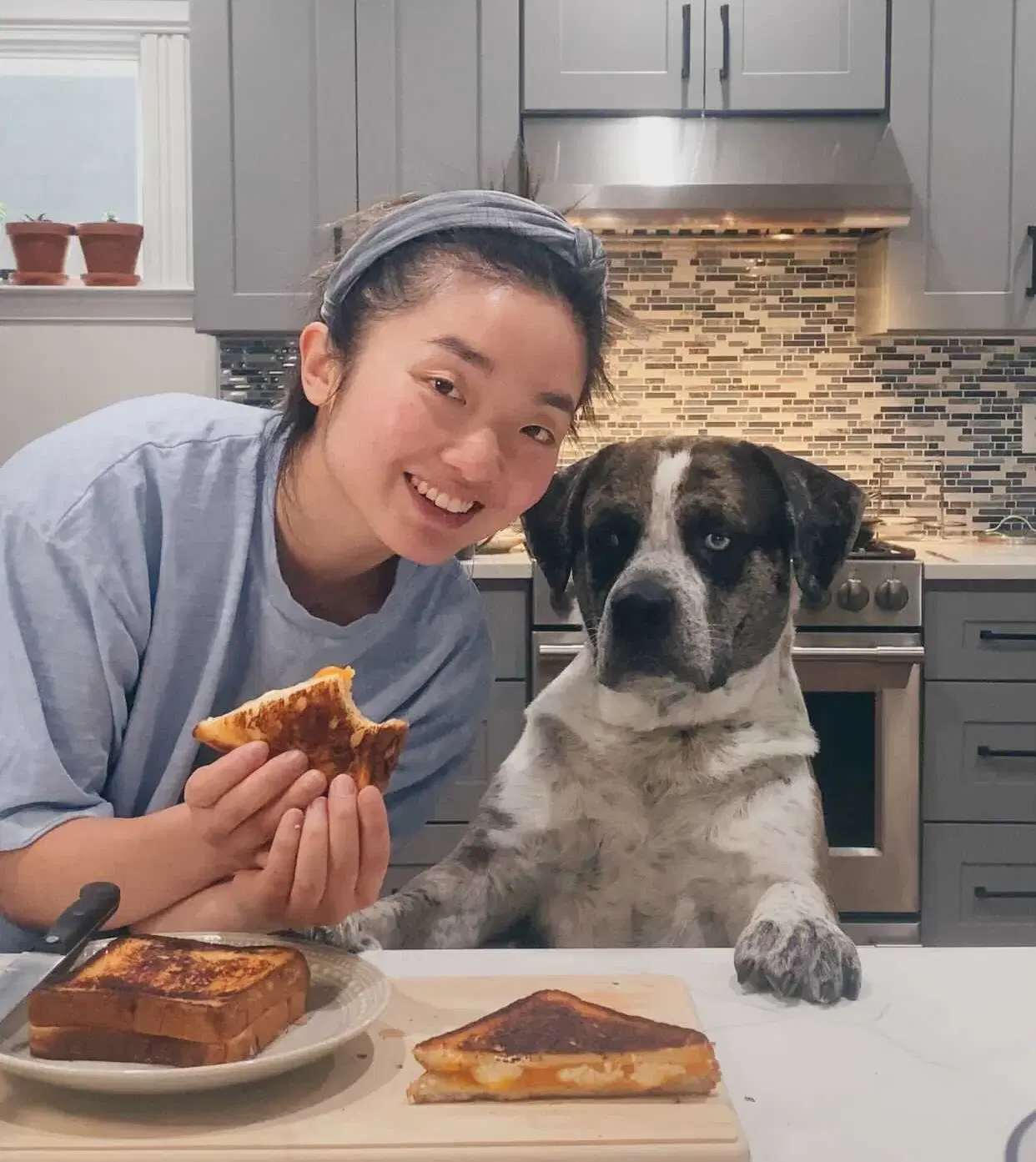Pork Belly Comfort Food: Zongzi (粽子)

Alice Sun (@alicecsun) shares a unique view into her life through the ways she uses food to nurture wellness, cross cultural divides, and bring people together, all through the medium of storytelling.
Every year, during the end of May, beginning of January, my family starts to make parcels of sticky rice, filled with the softest, most delicious pork belly, wrapped in bamboo leaves. The rice is marinated with soy sauce, giving it a salty umami flavor, while the pork is similarly flavored, making this the ultimate comfort food.
If you haven’t guess yet, I’m talking about zongzi! Zongzi are traditionally eaten during the Dragon Boat Festival aka duanwujie (端午节). The holiday itself is meant to commemorate a poet, Qu Yuan, who died in 278BC. Qu Yuan had a complicated history, starting as a well regarded states official, but then become exiled after the court turned against him. He ended up drowning himself out of despair. It is said that the people of the country respected him deeply and didn’t want his body to be eaten by fish, so they cast packets of glutinous rice, also known now as zongzi, into the water.
The origin of Zongzi in China can be traced back to the Spring and Autumn Period (approximately 771- 476 BC). At first it was used in ceremonies to worship ancestors and gods. But starting in the Jin Dynasty (266 – 420 AD), zongzi became the food associated with the Dragon Boat Festival. Outside of China, zongzi are created in different ways and enjoyed widely throughout Asian countries.
This recipe I’m sharing is particularly simple and something that can be easily whipped up without the need for too many speciality ingredients (other than the bamboo leaves).
Ingredients:
2 cups glutinous rice
1/2 lb pork belly sliced into bite sized pieces
Marinade for the pork:
2 tbsps shaoxing wine
4 - 5 tbsps soy sauce for the pork
1 tsp sesame oil
2 tbsps soy sauce for the rice + 2 tsps salt
20 pieces of dried bamboo leaves
Instructions:
Marinate the pork with the wine, soy sauce, and sesame oil over night — if you don’t have wine or sesame oil no problem, just marinate with enough soy sauce so that the pork belly takes on a rich dark brown color
On the next day, wash the rice first until water runs clear, saving the cloudy rice water for plants
Add the soy sauce and salt to the rice, then the overnight marinade from the pork, and mix until all the rice is well coated with soy sauce
Set the dried bamboo leaves in some hot water and let it soak until the leaves take on a darker color and get streaky
The leaves are ready when you can easily bend them and they don’t crack
Once the leaves are ready, take note that they have two sides, one side that’s smooth and one side where the middle stem of the leaf juts out
Take two leaves about the same size, cut off the stem part on the end then, make sure the smooth side is facing you and the rougher part if facing away
Starting from the end where you cut the stems off (it should be the wider part of the leaf) make a cone
Make sure the tip of the cone is completely overlapped and sealed, otherwise the rice will lose all its flavor during the boiling process
Stuff with a tablespoon of rice first, then a piece of pork, then fill up with rice
Fold the leftover piece of bamboo leaf over to cup the rice and it should make a triangle/pyramid shape (refer to video to see how it’s done)
Using butchers twine, tie up the bamboo parcel towards the top of the triangle and give it two twists at the overlap knot part to tighten
Set the zongzi in a pot with enough water to cover and bring to a boil, then lower to a simmer and cook for 1.5 hours
Enjoy hot or save in the fridge and microwave for 1.5 mins to warm up

